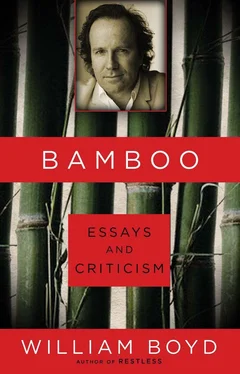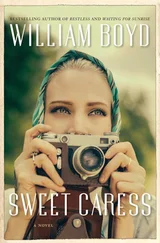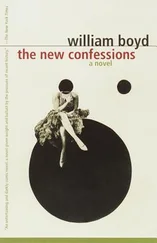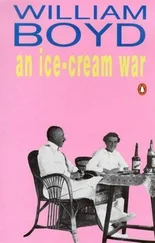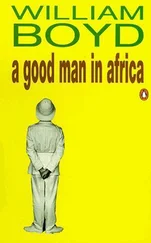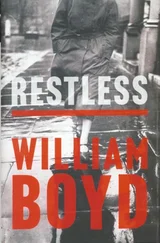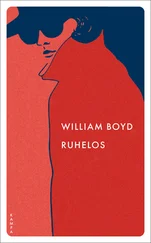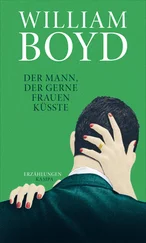Therefore I’ve tried to isolate, for harmonic poetic neatness, thirteen different ways we look at photographs. Perhaps there are more: perhaps some of my categories overlap somewhat, but I think the exercise — the thought-experiment — is valid because at the end of the process, if I am right, then what conclusions we draw about the anonymous photograph will bear intriguingly on the so-called “artless art” of photography itself.
Aide-memoire
Is this not why most of us take photographs? We use a camera to provide a visual analogue of a potential memory. We take photographs of places, people, pets, cars, houses, and so on, to store away. How many photographs are kept in boxes and not displayed in frames or mounted in albums (or, in this digital age, on hard disks)? Many of the anonymous photographs in this book inevitably fall into this category: here a little boy is snapped in front of a car; there, a housewife on a lounger looks up from her newspaper. Photographs of pets are of interest only to the owner (and possibly win the prize for the most boring photographs ever). The memory referent in these and other examples is lost to us now but in so many cases this must have been the motivation: the photograph functions simply as a way of recalling, a way of summoning up the past.
Reportage
This is the public face of the previous private category, in a sense. Often these images — of wars, of natural disasters, of historic events, of famous people, of gathered crowds — provide some of the most memorable images in the history of photography. Here the photograph is testimony, often of a shocking and harrowing order. Occasionally the horror gives way to more disturbing responses. The picture of the decapitated head moves beyond the initial shock of the image to something more surreal and unsettling. The juxtaposition of crashed car, empty country road and the victim’s head, seemingly carefully placed fifteen feet away from the body, looks like a scene from a Buñuel film. The camera is fortuitously present — or else, especially in combat zones, the photographer chooses to go where most of us would dare not. The great war photographers — Robert Capa, Don McCullin, Philip Jones Griffiths, Larry Burrows — come to mind
Work of Art
Sometimes the photograph tries to replicate the classic images of painting or sculpture. Think of the nude, the still life, the portrait. Here the photograph presents itself as a quasi-painting, a pseudo-canvas — with mixed results, in my opinion. Photos such as these — a corn cob or a vase of roses — seem vaguely ashamed of their mechanical reproductive nature and, by copying a genre, try to buy some aesthetic respectability. What’s the point of these images, one wonders (pace Mapplethorpe)? Only rarely can they outshine their equivalents in the plastic arts.
Topography
This category is related to the former, where the photograph tries to reproduce the effect of painted landscape, or a refulgent sunset. Or else the photograph is taken to register some natural phenomenon — mountain ranges, canyons, gorges, cataracts. As a means of recording a topographical situation the precision of photography is unrivalled. But is anyone as moved by the image of a photographed landscape as they are of a painted one?
Erotica and Pornography
This is perhaps a field that photography can claim as its own, having vanquished all rivals except, perhaps, the cartoon. The massive proliferation of sexual images (soft and hard) in our world exhibits something of the sheer range of photography’s power and effect — the gamut is extensive, the nuances of erotica are manifold. The naked women flourishing their suspender belts and baring their plump buttocks is frank titillation. The before-and-after images of three women, clothed and unclothed, make, perhaps guilelessly, a more intriguing social point. But the picture of a man and a prostitute in a darkened room with the shadow of a blind fanning over the cut-out pinups on the wall is interested purely in creating a fine photograph. Any erotic subtext is subliminal.
Advertisement
Subjects of erotic or pornographic images are selling their sexual frisson, such as it may be. But this category of photograph — the advertisement — is as ubiquitous as porn. These are photos that are programmed to function wholly as a form of allurement, as bait, as temptation. It is something photography does extremely well — better than any other form of image, conceivably. The whole huge world of fashion photography, for example, can be subsumed in this category.
Abstract Image
Here is another subclass that links with painting but in which photography has carved out a niche for itself. Something photographed in extreme close-up, for example, loses its quiddity and becomes near or wholly abstract. Two pairs of spectacles or the pistons and driving wheels of a locomotive are presented arrangements of shape and mass. A strange angle or extreme cropping can produce the same effect. The photograph functions simply and purely, being judged, like an abstract painting, in terms of form, pattern, texture and composition.
Literature
Again and again we are tempted to “read” a photograph, as if it were part of a narrative or a short story. This is particularly the case in anonymous photographs as we have so little to go on. Who are these masked women in their identical dresses? Or the odd trio in the bar (almost like a Brassai) — the two card-playing women and the young man with the glass and bottle. Is he with them? Perhaps he’s the true subject of the photograph. Does he know the photographer? (He’s looking into the lens.) We want to supply a “story” to the image, we want to find a narrative frame — or a series of frames — into which we can slot this image, and, as we bring our deduced or inferred narrative to the picture, attempt to understand it. This is a potent impulse in all photography and again it comes to the foreground when the image is anonymous. Walker Evans said: “Fine photography is literature, and it should be.”
Text
Why are there so many photographs of signs? There is a whole subdivision, throughout the history of photography, that concerns itself with the photography of writing or printed signs, running from an image like the photograph of a diner where its signs are what attracts—“Bohemian Lunch Café”—to the sophisticated work of someone such as Lee Fried-lander. I find it hard fully to comprehend this impulse but it is clearly near-universal and one the anonymous photographer is equally prone to adopt. The entrance to a town, the hand-painted advertisement, the comic misspelling or the absent letter — something about words seems to provoke the desire to photograph them, as if the verbal joke needs to be visibly enshrined.
Autobiography
Every photograph, if we knew enough about the circumstances of its taking, will contain some biographical information about the photographer. A photograph such as that of the little black boy with the dummy in his mouth and the toy rifle in his hand is a form of biographical signifier of the man or woman who took the picture. This is a wonderful photograph (very Diane Arbus in its calm eeriness) but is the juxtaposition of symbols deliberate or a result of chance? Is this child the photographer’s son? What’s trying to be conveyed here about the photographer’s attitude to innocence and experience? Can we move on from there to ask if every photograph, therefore, is an unconscious fragment of the photographer’s autobiography? Will all the photographs a person takes in his or her life be as much a record of that individual as anything written down?
Composition
One could argue this is a subclass of the “work of art” category but I feel that the traditional fine-art concept and rules of composition particularly apply to photography. Many of the most memorable photographs, in my opinion, are also beautifully composed. The picture of two Nazi storm troopers hand in hand with their identically uniformed toddlers is, apart from anything else, a perfect composition: it could almost be a Cartier-Bresson. The photograph of two boys fishing works precisely because of the inadvertent mirror-imaging of their pose. Of course the classical elements of composition — balance or asymmetry, grouping of forms, the placing of light and dark etc., etc. — apply to a photograph as well. But I find in a well-composed black-and-white photograph — and perhaps this is something to do with a combination of depth of field and the photo’s monochrome nature — an element that is absent from painting. One is more intensely aware of composition in black-and-white photographs. I think, for example, that this idea of composition is behind the unanalysable appeal of some of Cartier-Bresson’s photographs. Why are they so tenaciously memorable? It’s not simply a question of subject matter: the ones I remember best also tend to be the best composed.
Читать дальше
